ASUS G73Jw: Out with the Old, In with the New
by Jarred Walton on November 3, 2010 12:33 AM ESTASUS G73Jw: Battery Life, Noise, Heat, and the LCD
So we’ve got the same chassis, a CPU that’s the same power spec, but a different GPU. We mentioned in the past that it appears AMD could do more to tweak the 5800 mobile parts for better battery life. Without the ability to retest notebooks months later (i.e. with the latest driver updates), all we have to go on are previous results. Battery life ends up being the one area where the G73Jw is clearly superior to the G73Jh.
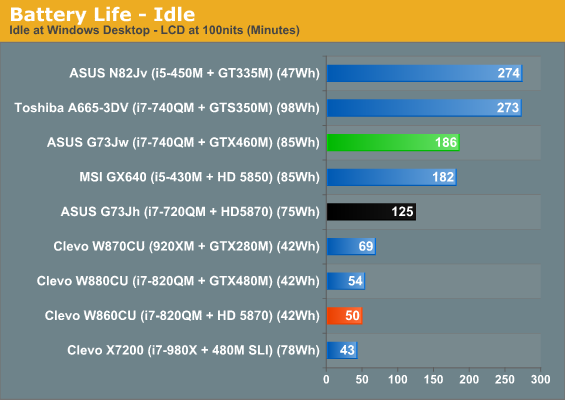
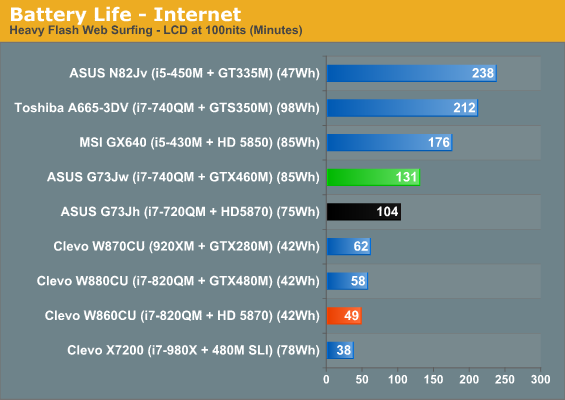
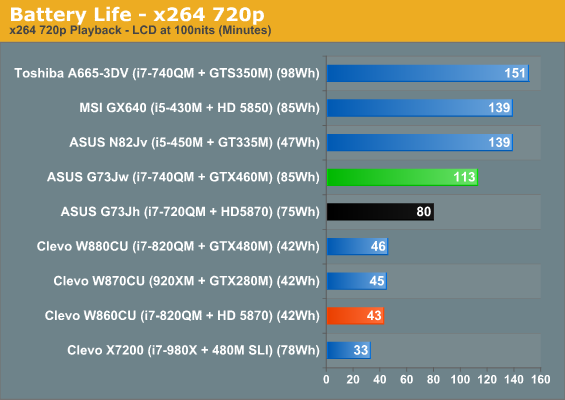
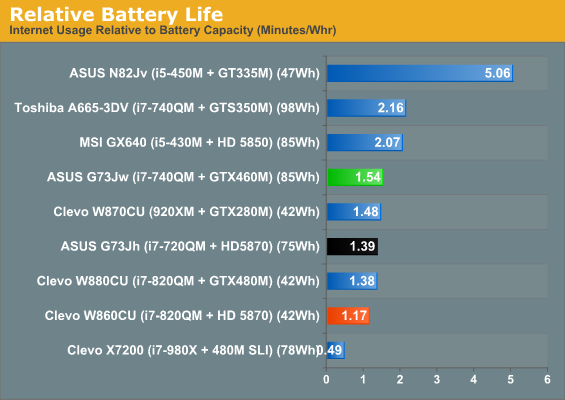
Idle battery life improves by 49%, Internet battery life is up 26%, and x264 playback is up 41%. HWMonitor even reports a wear level of 5-6% on the battery, despite over ten charge/discharge cycles, so potentially you could see even better results. However you slice it, the GTX 460M looks to be far better at idle power use than the 5870—for that matter, even the GTX 480M competes well with the HD 5870. Obviously you’re not going to buy any of the gaming notebooks as an all-day mobile solution, but it’s nice to at least get two to three hours if you need it.
If you’re interested in gaming on the battery, we also need to offer a word of caution. While we still got an hour of battery life looping 3DMark06, performance was one-third to one-fourth the speed we measured on AC power. In other words, unplug the G73Jw and the 460M suddenly starts performing like a GT 320M. That’s with the system using the highest performance options in the power settings we could select. Whether the low performance is necessary because of lack of available power from the battery, or if it’s simply a case of NVIDIA/ASUS hindering performance in order to improve battery life, unplugged the G73Jw is not going to be a gaming powerhouse.
Again we have HWmonitor reporting up to 54W of power use by a Clarksfield CPU, which is the TDP of the Extreme versions rather than the standard models. Minimum power draw for the 740QM is a massive 14W—more than some laptops use for everything at idle. Maximum CPU and GPU temperatures are very good, again highlighting how effective the G73 design is. We’re still curious as to why it’s only a 460M in the chassis, as it appears capable of handling more. Then again, perhaps it’s the power constraints rather than cooling that prevents ASUS from using something faster—and ultimately, even the mighty 480M only looks to be about 15% faster than the 460M. All things considered, the 460M looks like a good choice for the G73Jw; we’re just not convinced it’s dramatically superior to the HD 5870 in the previous model, outside of better idle power use.
The LCD: Nothing New Here
We’re not going to show detailed results for the LCD, since we’ve already seen this particular panel in the original G73Jh as well as the Clevo W880CU and X7200. It’s a good panel with an extremely high contrast ratio—we measured more than 1100:1! The down side is that maximum brightness is under 200nits, and in fact the G73Jw only manages 163nits. With such a low maximum white level, we had to double check to verify that the panel is even using LED backlighting, but it is; it’s just not particularly bright backlighting. Color accuracy and gamut are also good if not the absolute best we’ve seen. If you want to read more about the HannStar HSD173PUW1, you can refer to our G73Jh review or the X7200 review. We like the panel, but we’d still love to see a better color gamut and at least 300nits maximum brightness.


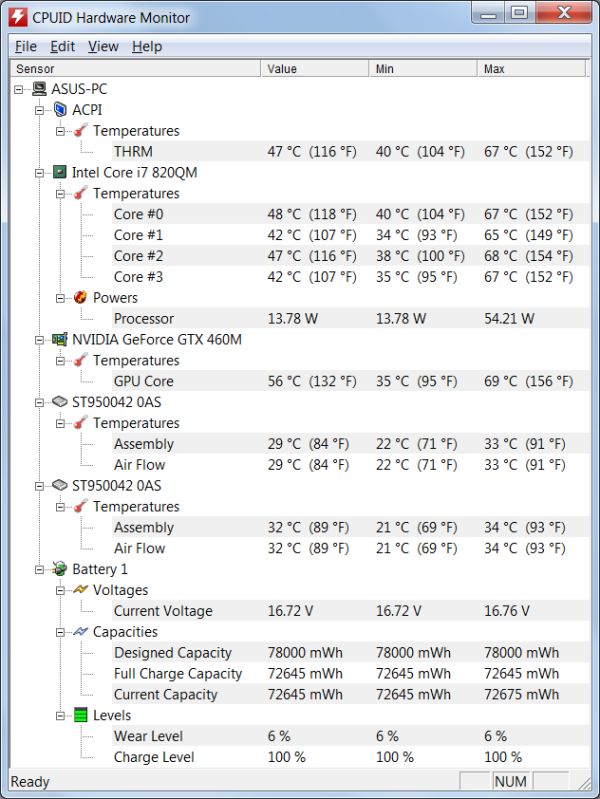








53 Comments
View All Comments
JarredWalton - Friday, November 12, 2010 - link
Not that I know of. I set the system for maximum performance, turned off and GPU power saving features I could see, and the result was still less than GT 335M performance when on battery.Sadaiyappan - Wednesday, November 10, 2010 - link
Can you explain in detail all the graphics settings you used for that Dirt 2 test? I have an MSI GX660R-060US but I am not getting the scores that the MSI GX640 got.Luke2.0 - Thursday, December 9, 2010 - link
Hi there,The spec table shows 8-cell 75wh, but the battery charts all shows G73jw used a 85wh.
Which one is correct?
And after clearing this, perhaps you could re-verify the better battery life: is it due to the stronger battery (85wh against 75wh) or G73jw being a MUCH more efficient system?
Thanks.